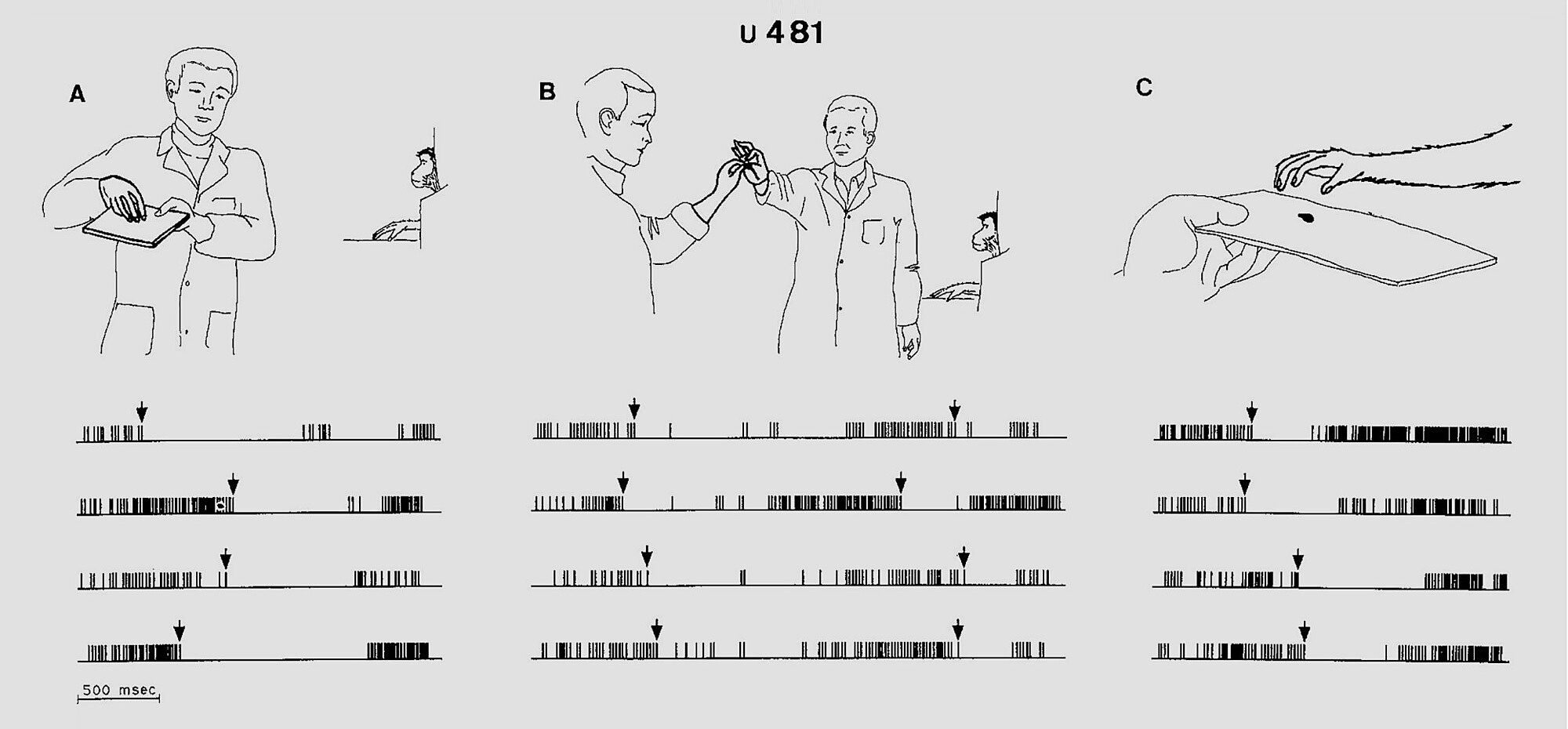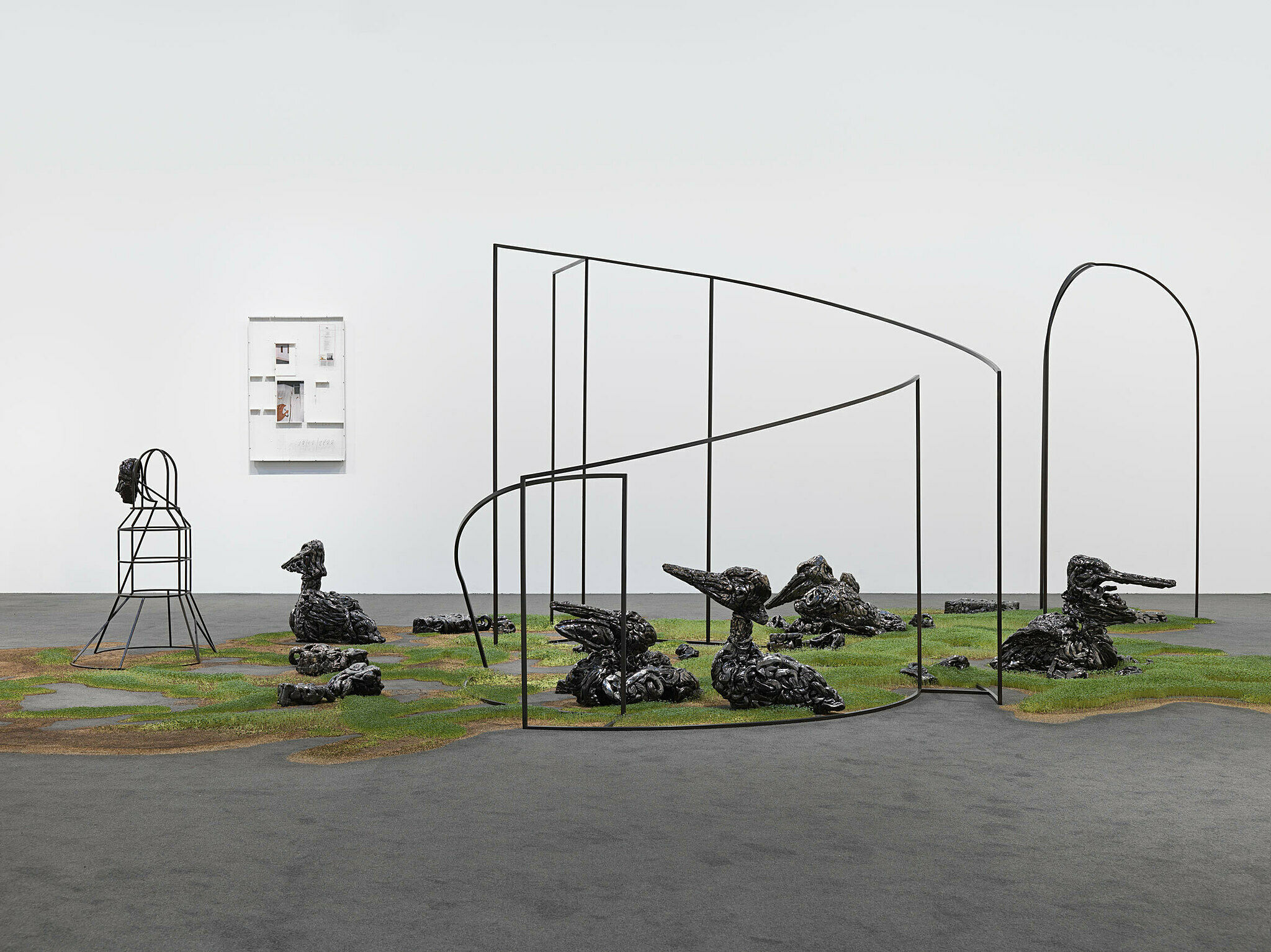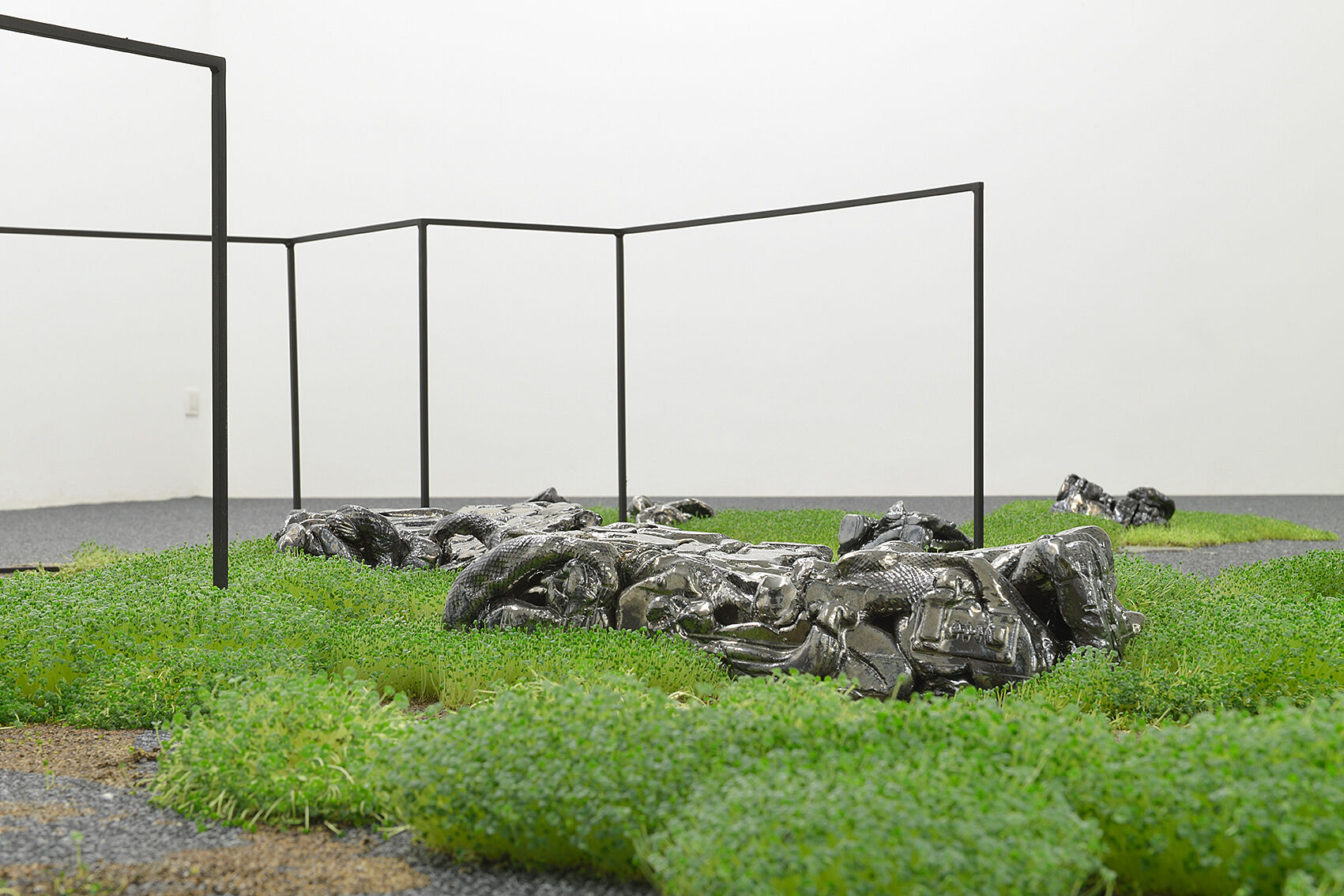Mirror Cells
Touching From a Distance
The sculptures and installations that make up Mirror Cells invoke shared experience. While the works originate in the artists’ individual, intuitive, and often emotional responses to specific locales, people, and communities, their resonance extends to virtually all viewers. Maggie Lee’s new video installations, as well as her related feature film, Mommy (2015), function as a family portrait—a story of immigration and growing up in the New York area that focuses on the artist’s hard-working mother, as contrasted with her charismatic yet absent father and punk older sister. Poignantly evoking the arc of life, the film is infinitely relatable even as its narrative is decidedly personal. Elizabeth Jaeger’s anthropomorphic vessels resemble social beings, with each ceramic piece imbued with a distinct attitude. With more girth than depth, the vessels make a bold first impression that humorously diminishes when they are viewed in the round. Liz Craft’s spider-women marionettes exude both fashionable cool and deep-set anxiety, and intimate a close-knit subculture made literal by the webs of yarn that envelop them. Win McCarthy’s tabletop sculptures appropriate headlines and snapshots to conjure the unease, fear, and alienation found on the streets of New York. And Rochelle Goldberg’s chia installation creates a living ecosystem in the gallery, making palpable our connection to other organisms. The works in the exhibition suggest that the world we live in consists of not only the brick and steel of our homes, the pollen and pollution in the air, and the data that consumes and subsumes us, but also how we perceive what surrounds us, the stimuli we take in and interpret.
In 1992 a group of scientists at the University of Parma in Italy discovered a new class of brain cells in macaque monkeys that activated when the monkeys observed actions performed by others. Named mirror neurons, these cells fired “when the monkey observe[d] specific, meaningful hand movements performed by the experimenters,” particularly actions involving the mouth.G. di Pellegrino et al., “Understanding Motor Events: A Neurophysiological Study,” Experimental Brain Research 91 (1992): 176.The researchers noticed that the neurons responded to actions like grasping, placing, manipulating, and holding objects, as well as watching two hands interacting. The neurons did not respond to the mere appearance of an object. Further, researchers detected a greater response during an action—for example, as a raisin was being placed on a table—than afterward, when the hand moved away.Vittorio Gallese et al., “Action Recognition in the Premotor Cortex,” Brain 119 (1996): 595-97.The same cells fired when the monkey imitated the gesture, as when it picked up the raisin it had seen placed on the table.
These and other experiments demonstrate that macaque monkeys have an innate system that connects them to their environs. Expounding on their initial discovery, the Parma scientists wrote, “If one considers the rich social interactions within a monkey group, the understanding by a monkey of actions performed by other monkeys must be a very important factor.”di Pellegrino et al., “Understanding Motor Events,” 179.Not only do the mirror cells aid monkey-to-monkey interaction, they also facilitate interspecial communication since the monkey neurons respond to the actions of human researchers. Observations elicit neurological stimuli when the monkey re-performs what it witnessed. The observed world—that beyond the self—is interiorized.
This phenomenon speaks to Jakob von Uexküll’s notion of umwelt.Jakob von Uexküll, “A Stroll through the Worlds of Animals and Men: A Picture Book of Invisible Worlds,” in Instinctive Behavior: The Development of a Modern Concept, ed. Claire H. Schiller (New York: International Universities Press, Inc., 1957). I thank Rochelle Goldberg for bringing this to my attention.The German biologist defined umwelt as the environment within which a subject perceives and acts, the "bubble" in which one receives information and reacts to it. The umwelt of one species can vary greatly from that of another, even if they occupy physically overlapping areas. A human, a dog, and a tick may reside in the same locale, for example, but each is receptive to a different range of stimuli. A dog’s sensitivity to sound and smell is much greater than a human’s, and an adult tick is blind and deaf but attuned to the acids secreted by the skin of mammals.Ibid., 6-7.If each species were to describe its world, the description would seem alien to the others, even though they all actually were interpreting the same world but through different receptors. For the macaque monkey—and, by inference, other primates, including humans—its reading of the world extends beyond the information received by a single individual. The reading grows through interaction with others: the movements of one monkey are reproduced in the minds of other primates, offering “a neural basis of a mechanism that creates a direct link between the sender of a message and its receiver.”Giacomo Rizzolatti and Laila Craighero, “The Mirror-Neuron System,” Annual Review of Neuroscience 27 (2004): 183.
Scientific observations of mirror-neuron activity in humans suggest the cells may play a role in the acquisition and development of speech. Further, they may help us recognize the aims and motivations of others—what in psychology is referred to as the theory of mind. If mirror neurons allow us to imitate the acts of others and they work in tandem with brain cells that help us recognize human faces and emotions, there may be a biological foundation for empathy. The Stanford Encyclopedia of Philosophy states: “Since the face-to-face encounter between persons is the primary situation within which human beings recognize themselves as minded creatures and attribute mental states to others, the system of mirror neurons has been interpreted as playing a causally central role in establishing intersubjective relations between minded creatures.”Karsten Stueber, “Empathy,” The Stanford Encyclopedia of Philosophy (Winter 2014), ed. Edward N. Zalta. I thank Alex Robins for bringing this to my attention.These special cells help foster the social animals we recognize ourselves to be, with the ability to see things from another’s perspective and to glean meaning from it.
Mirror Cells embodies this deeply communicative spirit. All of the featured artists articulate a tension between connection and alienation, whether through responses to the loss of a loved one, dramatic shifts in a city, a sense of marginalization, or ecological disruption. These things are witnessed and felt, recapitulated in the mind and brought forward once more through artistic compositions. For the artists, the imaginary is on equal footing with the real world: one mirrors the other as a generative foil. They create works that are uncanny and evocative, producing, in the words of poet Marianne Moore, “imaginary gardens with real toads in them.”Marianne Moore, The Poems of Marianne Moore, ed. Grace Schulman (New York: Penguin, 2003), 135. Bruce Hainley quoted Moore’s poem in his essay on Liz Craft, “Self-Portrait as the Garden between Eve and the Snake,” Frieze 42 (September—October 1998).



